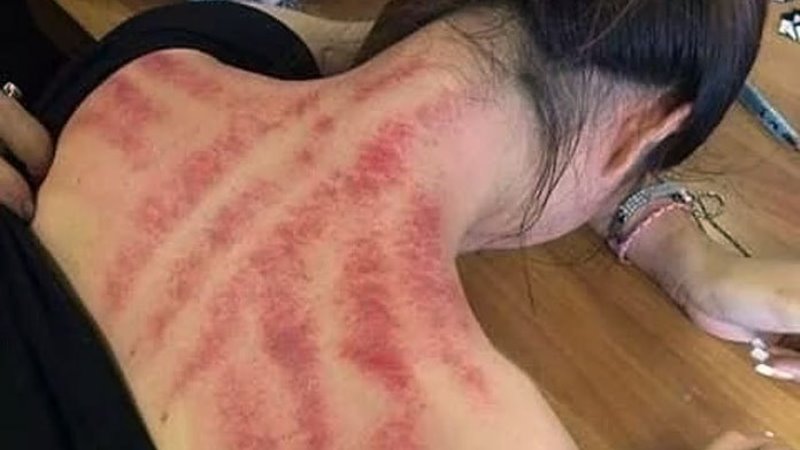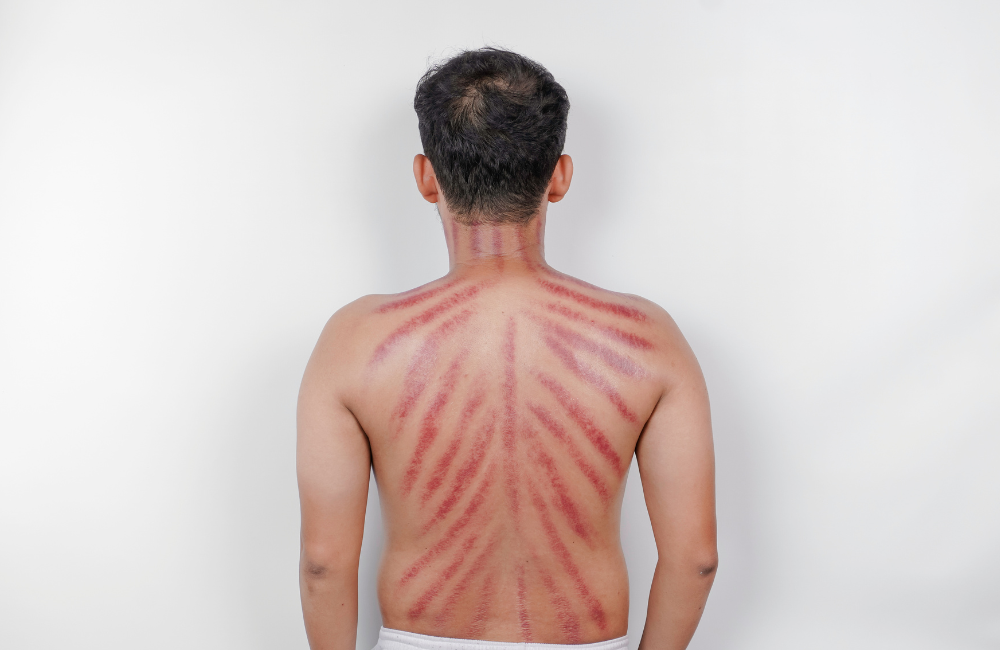Kerokan Is Going Viral: Why Everyone’s Raving About This Indonesian Cold Remedy
Ever had those days where you feel sluggish, your body aches, and a sniffle sneaks up out of nowhere? We’ve all been there—Netflix sounds boring, your phone feels heavy, and your head? Foggy as ever. Well, TikTok’s newest wellness obsession just might have the answer, and it’s not some overpriced supplement. It’s something wonderfully simple: Kerokan—Indonesia’s viral cold remedy that feels like a warm hug and a muscle massage rolled into one.
Let’s dive into why this centuries-old ritual is suddenly taking over For You pages and health circles globally.
What Exactly Is Kerokan? The Indonesian “Gua Sha” You Didn’t Know You Needed
Think gua sha, but instead of fancy jade tools and luxury oils, it’s your mom, auntie, or grandma grabbing a coin and soothing your sore back. Kerokan (or “coin scraping”) is a beloved home remedy in Indonesia where people gently scrape their skin to relieve symptoms of colds, muscle fatigue, and headaches.
Kerokan doesn’t just look cool—it leaves distinctive red lines on your back that actually signal improved circulation and “wind” release (known locally as masuk angin). While it might seem intense, most Indonesians swear by it—and now, the rest of the world is catching on.

Why Kerokan Suddenly Blew Up Online
Blame TikTok, Instagram Reels, and those satisfying before-after videos! One viral video of a travel blogger experiencing kerokan in Bali quickly racked up millions of views. What started as a local tradition became the latest global wellness curiosity—kind of like how gua sha became mainstream.
Beauty influencers are showing off their kerokan marks like a badge of honor, athletes are using it for post-workout recovery, and even Western wellness gurus are calling it the “rawest, most effective self-care ritual.”
The Feel-Good Science Behind Kerokan
Okay, but does it actually work? Surprisingly, there’s real science behind it.
- Boosts Blood Circulation: Studies have shown that scraping increases microcirculation, helping muscles recover faster.
- Natural Detox: By stimulating the skin, kerokan promotes lymphatic drainage—similar to gua sha benefits.
- Relieves Cold Symptoms Naturally: Indonesians have been using it for generations to kick out colds, beat fatigue, and soothe headaches—all without meds.
Even Harvard Medical School mentions how similar scraping techniques, known as “gua sha,” can reduce inflammation markers. Kerokan’s no gimmick—it’s ancient wisdom backed by modern science.
Kerokan vs Gua Sha: Which Should You Try?
Both methods involve scraping, but the vibe is totally different.
| Kerokan | Gua Sha | |
|---|---|---|
| Origin | Indonesia | China |
| Tools | Coins, spoons, anything handy | Jade, rose quartz tools |
| Purpose | Relieve colds, body aches | Facial contouring, circulation boost |
| Feeling | Intense, relieving | Gentle, relaxing |
| After Effects | Red marks on back | Light skin redness |
Kerokan is raw, practical, and healing, while gua sha leans into beauty and skincare. Honestly? Why not both!
How to Try Kerokan at Home (Without Freaking Out Your Roommates)
If you’re tempted to give kerokan a go, here’s a quick, no-drama guide:
Step 1: Grab Your Tools
No fancy gadgets needed. A simple coin or spoon works. Coconut oil, balm, or even body lotion can be used to ease the scraping.
Step 2: Apply Oil Generously
The oil helps the coin glide over your skin without irritation. In Indonesia, people often use eucalyptus oil for an added refreshing feeling.
Step 3: Firm but Gentle Scraping
Have a friend scrape your back in upward motions along the spine and shoulders. Expect some heat, slight discomfort, and those famous red streaks—it means it’s working!
Step 4: Rest Up
Kerokan works best when followed by rest, warmth, and hydration. Netflix and herbal tea, anyone?
Why Gen Z and Millennials Are Obsessed with Kerokan
Between burnout, stress, and long screen hours, modern life is exhausting. Millennials are over expensive self-care trends, and Gen Z is all about cultural authenticity. Kerokan is both—natural, cheap, and rooted in tradition.
Plus, it’s the perfect conversation starter:
“Oh, you use vitamin C gummies? I get my life together with kerokan.”
It’s DIY, budget-friendly, and honestly, feels incredible.
Pop Culture Moments: Celebs and Influencers Trying Kerokan
Don’t be surprised if you see kerokan pop up on wellness podcasts or celeb Instagram stories soon. Some wellness influencers are already testing it post-flight to avoid jet lag. Travel vlogger @NomadicNina called it her “game-changing travel hack” after a tough Bali trip.
As with any trend, there’s already merch: personalized kerokan coins, artisanal coconut oils, and even “kerokan starter kits” on Etsy. It’s officially mainstream.
When You Should (And Shouldn’t) Try Kerokan
While kerokan is safe for most people, here are a few friendly tips:
✅ Great for:
- Tired, achy muscles
- Colds and chills
- Post-workout recovery
❌ Skip it if:
- You have sensitive skin or skin conditions
- You bruise easily
- You’ve got serious medical conditions (always check with a doctor!)
Final Thoughts: More Than a Trend—It’s Culture, Healing, and Simplicity
Kerokan is more than viral content—it’s a beautiful reminder that healing doesn’t have to come in expensive packages. It celebrates culture, connection, and simplicity. Maybe the next time you feel sluggish, skip the pharmacy run and grab a coin instead. Sometimes, the best cures are the ones passed down through generations.
FAQs
What does kerokan help with?
Kerokan is used to relieve cold symptoms, muscle aches, headaches, and general fatigue by improving circulation and releasing trapped “wind” or bad energy.
Is kerokan safe to do at home?
Yes, kerokan is safe if done gently with proper oiling. Avoid it if you have sensitive skin or medical issues, and always stop if it feels painful.
How often should I do kerokan?
For cold relief, once every few days is enough. Overdoing it can cause bruising. Most people use it when feeling run-down or after intense physical activity.
- Want to explore other viral wellness trends? Check out our guide to ancient Asian self-care rituals.
- According to Healthline, similar scraping techniques like Gua Sha have been used globally for muscle relief and wellness.


